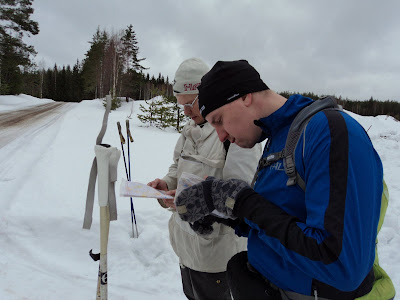If I'm going to keep blogging at this
pace I am going to have to expand my subject range from endurance
sports and into other interests of mine (of which there actually are
some).
As may be obvious I do a lot of reading
and honestly I'm not very discriminating about what I read. I read
everything that comes to hand and sometimes that's not very literary.
But I am always reading. I really don't know what I would do
without being in the middle of a book. When one ends I start
another. Chain reading I guess.
Lately though it has come to my
attention that other folks have different attitudes and habits about
reading. A few of these strike me as particularly odd.
One friend of mine is saving some of
one particular author “for later” because he doesn't want to run
out. It is true that this particular author is unlikely to write any
more (he's dead) and has been an inspiration to many, but the
behavior still seems bizarre. The way I see it there are new books
coming out every day. Some of those are going to be of interest to
you. Some of those are going to be good. And some will even be
great. I understand that there will never be another author X, but
that doesn't prevent someone from being just as good in a different
sort of way. I know I will never again read Tolkien's The
Silmarillion for the first time. That's okay I have found a lot
of other books and authors that are just as good in their own way.
Nor am I particularly off put by having the ending “spoiled”. The
journey is just as important as the destination (this of coming from
someone who saw the ending of The Usual Suspects before seeing
the rest.)
Another person I know only reads two
authors. He reads them over and over, but only those two. He has
found what he likes I guess. This is equally, no, even more bizarre.
Granted the two authors he reads are pretty darn good, but it seems
so limiting. I wonder how many other authors he read before he came
to the conclusion that those were the authors for him. Again I'll
use the example of Tolkien. I read The Silmarillion perhaps
12 times in one year. I was a little obsessed back then (I still am
just about different things), but I read other things. I read essays
about Tolkien, his writing, published notes, and even studied his
created languages (no, I can't really speak elvish, just a few
phrases). But I got over it, within a year or so I was reading
Dostoevsky, then Pirsig, and so on. I did re-read The
Silmarillion and The Hobbit a few months ago and quite
enjoyed it.
Now comes the most surprising and
probably most common weirdness of all. Apparently some people, when
they come close to the end of a book actually slow down and read it
slower. Only reading a few lines at a time. Spreading it out and
savoring it. Not wanting the book to end. This is completely
unfathomable to me. If anything when I come to the end of a book I
forget everything else and dive in completely. I read to all hours
of the night throwing caution, meals, and sleep to the wind. It's
not so much that I want the book to end, but I am so eager to see
what comes next, how it plays out. Besides, I know that as soon as I
am finished there will be another book waiting for me.





































